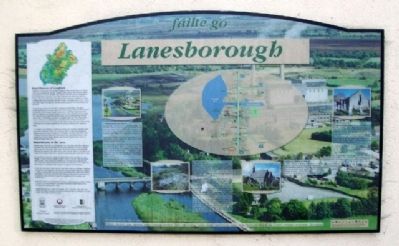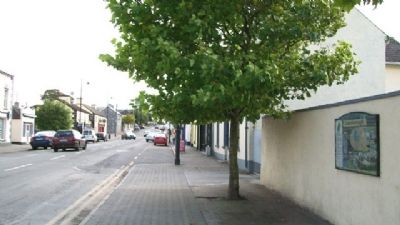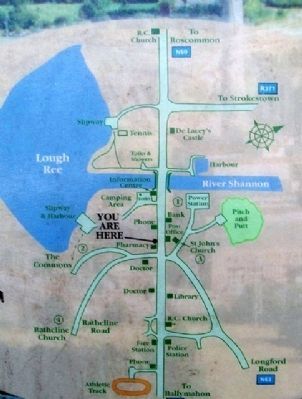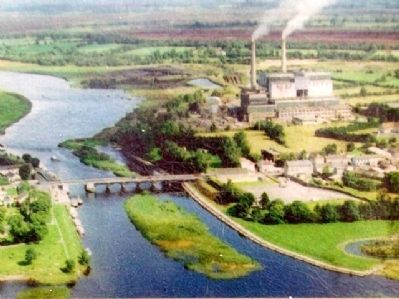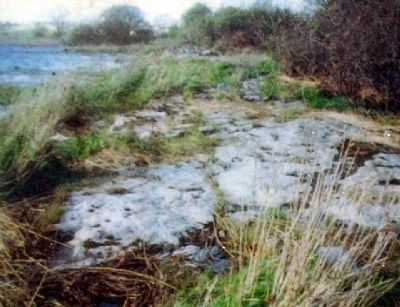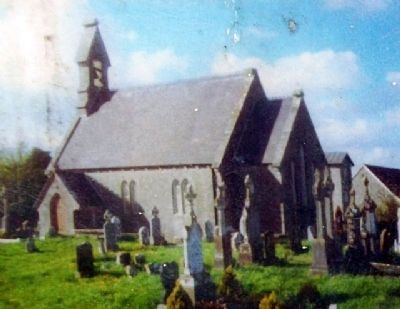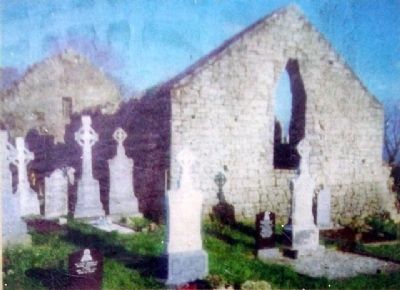Lanesborough in County Longford, Leinster, Ireland — Mid-East (and Dublin)
fáilte go Lanesborough
Brief History of Longford
Longford is a focal point of the northern midlands where the provinces of Leinster, Ulster and Connaught all converge. Longford, where history and literature, tradegy and triumph are all woven together, takes its name from the ancient stronghold of the O'Farrell family (Long Fort - Fort of the O'Farrells) who ruled from the 11th Century. Bordered to the west by the majestic River Shannon, Longford is a county of rolling plains and picturesque stretches of water. The highest point of the county, Cairn Hill, is only 270m high, but from the summit glorious views are afforded in all directions.
Longford's past reaches into pre-history marked by connections to the great mythological Tuatha Dé Danann sagas such as The Wooing of Étáin and the Route of the Táin and by the remains of many ancient sites. Early Irish Christianity left its mark on Longford with monastic remains such as St Mel's Cathedral ruin at Ardagh, the Cisterian ruin at Abbeylara and placenames such as Tubberpatrick. The last battle of the 1798 rebellion took place in Longford when the ‘Year of the French’ came to a bloody end at Ballinamuck. Longford's motto emblazoned across its county creed declares it to be ‘Daingean agus Dilis’ - ‘Strong and Loyal’; without doubt it has lived up to its self-set standards and has proudly influenced the Ireland of today.
Co. Longford is the birthplace of illustrious writers such as Oliver Goldsmith, Maria Edgeworth and Padraic Colum. The county has much to offer with magnificent angling, equestrian, golfing, boating and swimming on the many lakes, white water canoeing on the River Inny, lovely walks, historic sites and peatland areas to visit. Longford also boasts a vibrant nightlife, many modern theatres and a variety of festivals throughout the county.
Brief History of the Area
Lanesborough is set at the top of Lough Ree, one of the lakes of the River Shannon. Its original name ‘Ath Liag’ translates as ‘Ford of the Flagstones’ as it was a crossing point on the river. The eastern side of the river became known as Lanesborough following the granting of the castle (now in ruins) and the lands to Lord Lane on 24 August 1664 by King Charles II, as a reward for supporting him in his years of exile.
The first effort to construct a bridge at Lanesborough was in 1000AD. In 1140 Turlagh O'Connor erected a bridge of ‘hueles’ across to the ford. This was broken down in 1690. A new bridge was completed in 1706 and was reconstructed in 1971. One of the original stones with a sundial was added to the new bridge with a line through it to distinguish both counties of Longford and Roscommon.
Ta Béal Átha Liag suite ar bharr Loch Ri, ceann dena locha ar an Sionainn. Ciallaionn Áth Liag ‘ford of the flagstones’, áth na leacha, toisc gur pointe transú ar an abhainn é. Túgadh ‘Lanesborough’ ar an taobh thoir den abhainne taréis a bhrunadh caisléan agus talamh ar Lord Lane ar an 24ú Lúnasa 1664 ag an Rí Searlais II, mar luach toisc an tacaiocht a thug Lord Lane dó agus é in ionnarbhacht. (Tá an caisléain mar fothrach anois).
Rinneadh an chéad iarracht droichead a thógáil i mBéal Átha Laig sa bhliain 1000AD. Sa bhliain 1140, thóg Tiúrlagh Ó Conchubair droichead le claith trasna an áth. Scriocheadh an droichead seo i 1690.
[last paragraph of Gaelic transcription missing]
1 Fishing Stand and Industry
Lanesborough is renowned for its excellent fishing. The ‘Hot Water Stretch’ adjacent to the peat fuelled power station has attracted fishermen from all over Europe. The riverbank has been completely revamped and now has 60 stands at the bridge, with 4 stands for the disabled.
Bream, roach, hybrids, tench, perch and guideon are the main species of fish caught here. Boats can be hired locally by phoning (043) 21510.
The power station was built in 1958 and used turf from local Bord Na Mona bogs. A second station was completed in 1966 and was designed to use milled peat which could be produced more economically. A third station came into production in 1983. Bord Na Mona and the ESB are the two main industries in Lanesborough today.
Das heisse Wasser neben dem Turfgerzeugte Kraftwerk hat Fscher von ganz Europa hingezogen. Das Flussufer wurde total neu gebaut und hat jetz uber schzig Platze mit vier Platzen fur Behinderte Leute.
2 The Commons
This is a rich ecological area south of Lanesborough. It contains an area of mixed woodland, limestone quarry, reedbed systems grading into freshwater marsh and dense species of rich scrub/verge grassland. An example of limestone pavement present here is rarely seen outside Co. Clare. The limestone pavement has numerous vegetated grykes and bryophytes.
The dominant species of the woodlands are hazel, ash, willow, alder, and some oaks. The woodland/scrub and grassy verges have bent grass, fescue, cocksfoot, bramble and some bra__.
Common ree___ rush, water lily and water plantain can be found in the reedbeds. In the freshwater marsh, yellow flag, meadow sweet, reed grass, soft rush and bottle sedge are some of the specimens that can be found there.
Dit is een rijk ecologisch gebied, ten zuide van Lanesborough. Het bestaat uit land beplant met bomen, een lijmsteen groveen, een rietbed systeem dat in een zoetwater moeras uitloopt. Daarlangs groeit een dikke verplanting met boompjes en struiken en weiland. Er is heir ook een boorbeeld van een lijmsteen voetpad, dat zelde gezien wordt buiten de County Clare.
3 St John's Church of Ireland
St John's Church of Ireland, dating back to the 5th century, is one of the oldest buildings in Lanesborough. It was plundered during the Cromwellian and Williamite Wars but was finally rebuilt in 1861. The cut limetone building has large windows and gothic arches. The church in on the outskirts of the town and is still in use.
4 Rathcline Church
The most imposing religious site in the parish is in Rathcline cemetery. Here stands the lovely ruin of an ancient church. The ruined building has the remains of a Romanesque window and dates from the 12th or 13th century. The church was renovated around the 15th century. Most of the gothic doorway, which was inserted then, still survives today. Also added was an ogee-headed window high on the west gable with a ‘Sheela-na-Gig’ carved on the northern splay. The church is situated approximately 4km from the town.
Le cimetiere de Rathcline est le site réligieux le plus imposant du village. Ici se dresse la ruine d'une ancienne église, qui comprend le reste d'une fenetre romane datant 13 eme ou 14 eme siécle.
A la meme époque un portail gothique a été construit don't la plupart existé toujours. Aussi ajoutée plus tard, haut sur le pignon ouest, est la fenetre en accolade sur laqueille est sculpture un ‘Sile na Gig’ (symbole celte de fertilité) sur l'embrasure du coté nord.
Erected by Longford Community Resources Ltd., LEADER II Programme, and Longford County Council.
Topics. This historical marker is listed in these topic lists: Churches & Religion • Industry & Commerce • Settlements & Settlers • Wars, Non-US • Waterways & Vessels. A significant historical year for this entry is 1798.
Location. 53° 40.368′ N, 7° 59.37′ W. Marker is in Lanesborough, Leinster, in County Longford. Marker is on Main Street (National Road 63), on the left when traveling west. Marker is about 250 meters east of the Main Street Bridge over the River Shannon. Touch for map. Touch for directions.
Other nearby markers. At least 7 other markers are within 14 kilometers of this marker, measured as the crow flies. Lanesborough / Béal Átha Liag History 500 - 1900 AD (about 180 meters away, measured in a direct line); fáilte go Kenagh (approx. 12.8 kilometers away); Strokestown Brewery (approx. 13.8 kilometers away in Connacht); Mahon Dower House (approx. 13.8 kilometers away in Connacht); Dr. Dudley Forde House (approx. 13.8 kilometers away in Connacht); The Sharkey Sisters (approx. 13.8 kilometers away in Connacht); County Longford Great War Memorial (approx. 13.9 kilometers away).
Also see . . . Lanesborough-Ballyleague. (Submitted on February 14, 2010.)
Credits. This page was last revised on August 16, 2017. It was originally submitted on February 14, 2010, by William Fischer, Jr. of Scranton, Pennsylvania. This page has been viewed 1,851 times since then and 20 times this year. Photos: 1, 2, 3, 4, 5, 6, 7. submitted on February 14, 2010.
